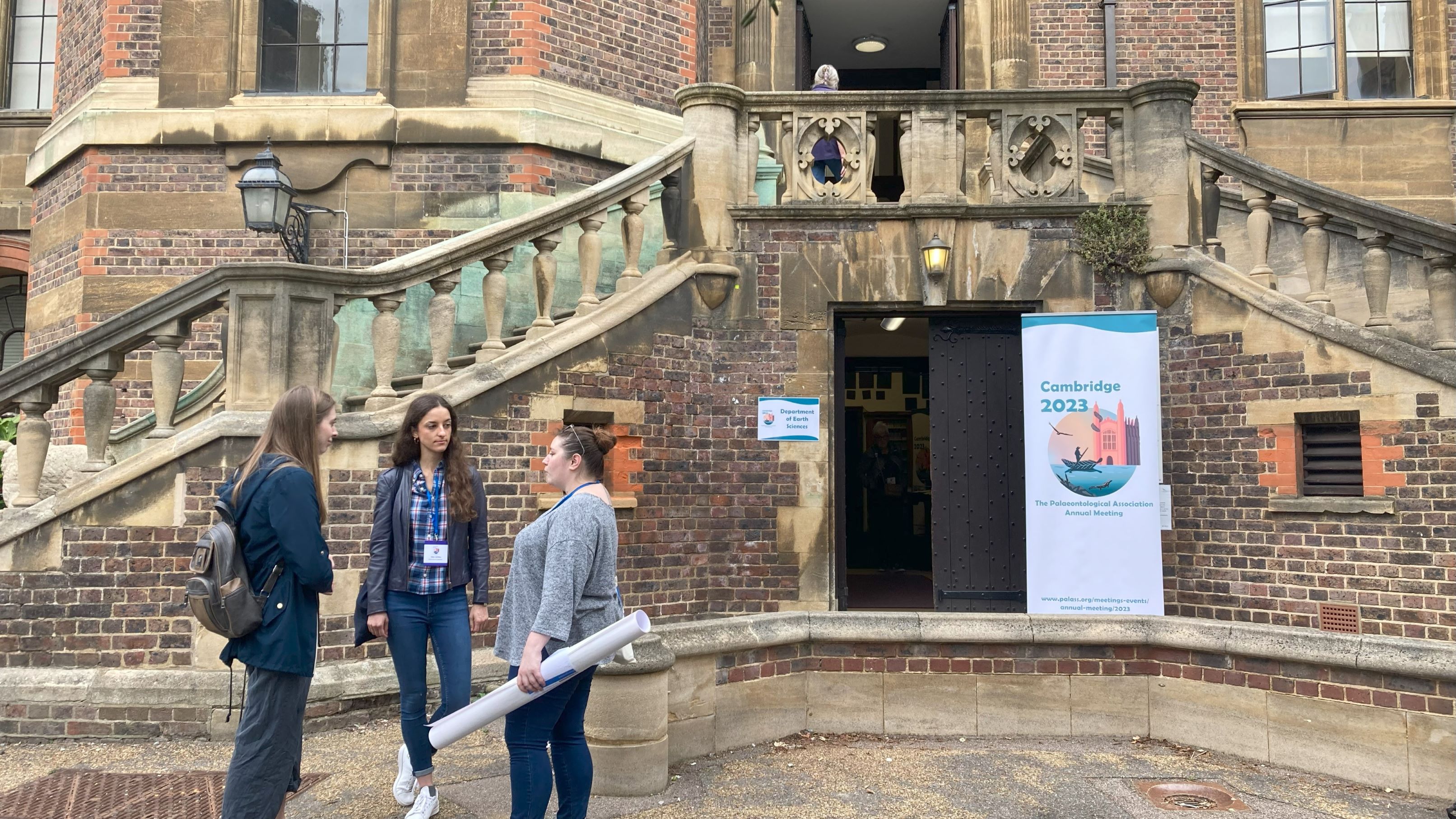The Ediacaran biota pose a riddle that scientists have grappled with for decades. Found in three distinct biotic assemblages – the Avalon (575–560 million years ago; Ma), White Sea (560–550 Ma), and Nama (550–539 Ma) – these peculiar Ediacaran organisms may hold the key to unlocking the secrets of early animal evolution. Conventional studies tie diversity and ecological changes across these assemblages to biological radiation and extinction events. Can a closer look at the preserved paleo-environments that contain the fossils, using our sedimentology and stratigraphy toolkit, offer a fresh perspective?
Palaeontological Association 2023 conference comes to Cambridge
Annabel Hunt is a second year PhD student studying the evolution of the theropod palate in the Field Palaeobiology Research Group at the Department of Earth Sciences. Here, Annabel reports back on attending the 2023 Palaeontological Association Annual Meeting.
Continue reading “Palaeontological Association 2023 conference comes to Cambridge”Exploring the environments inhabited by Earth’s earliest animals in Namibia
Fossils of the Earth’s earliest animals appear abruptly in the geological record ~574 million years ago (Mya), and then suffer a mysterious decline in diversity just a few million years later ~550 Mya. Some researchers consider this biological change to be Earth’s first mass extinction event.
Continue reading “Exploring the environments inhabited by Earth’s earliest animals in Namibia”Life after graduating, and life before the Cambrian Explosion
Before the unprecedented months of virtual everythings – hand sanitiser-soaked fingers and meetings in pyjama bottoms – I was happily enjoying my final year as an undergraduate. Whilst making the most of my time left in beautiful Cambridge and running the greatest student geological society there is (the unofficial title I awarded the Sedgwick Club), I found myself working on an interesting Master’s project with Alex Liu. The exciting results that came out of this project gave me something to focus on whilst stuck at home in the months after graduation. I’ll tell you more about my project, and my journey to getting my results published, in this blog post.
Continue reading “Life after graduating, and life before the Cambrian Explosion”Scanning Ediacaran fossils in Newfoundland
In September, I spent three weeks in Newfoundland, Canada working on world class Ediacaran fossil surfaces with Emily Mitchell, Charlotte Kenchington and Lucy Roberts. After eight hours of travelling, our bright red truck full of precision equipment, people and food arrived in the town of Portugal Cove South. We settled into ‘The Green House’, where we would be staying, and promptly collapsed in bed.
Continue reading “Scanning Ediacaran fossils in Newfoundland”






